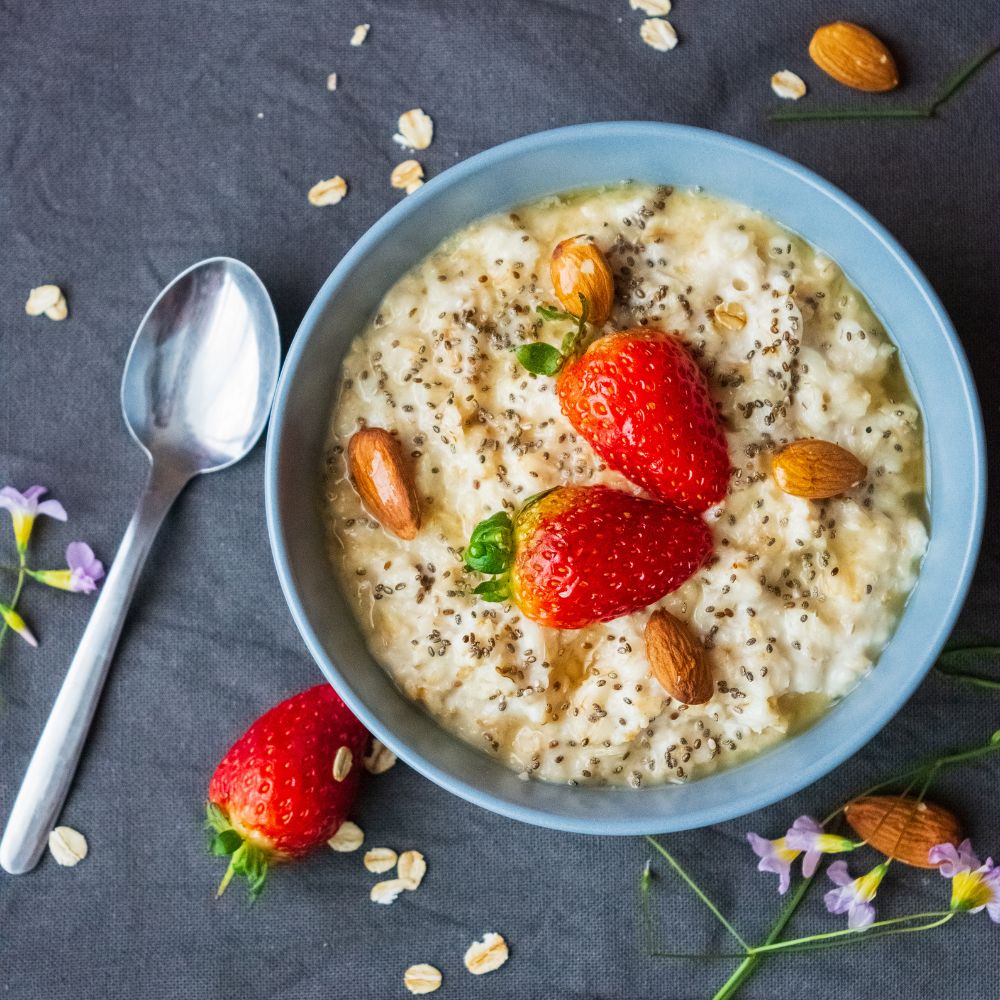Oats offer a nutritious whole grain packed with fiber, vitamins, and minerals, making them a popular choice for breakfast and snacks. With various types available, each brings unique benefits and culinary uses. Here’s a breakdown of the different types of oats and insights into which ones might best suit your needs.
1. Whole Oat Groats
What They Are: Because they include the full grain—bran, endosperm, and germ—whole oat groats are the most intact of all the varieties of oats.
Cooking Time: About 45-60 minutes.
Benefits: Groats are the least processed option, retaining maximum nutrients. They are high in fiber and can help with heart health and weight management.
Best For: Those looking for a hearty, nutritious base for grain bowls or side dishes.
2. Steel-Cut Oats
What They Are: Manufacturers make steel-cut oats by slicing whole oat groats into smaller pieces with steel blades.
Cooking Time: About 20-30 minutes.
Benefits: These oats have a chewy texture and nutty flavor, providing a satisfying breakfast option. They are also low on the glycemic index, making them a good choice for blood sugar control.
Best For: A hearty breakfast option; great for those who prefer a chewy texture.
3. Rolled Oats (Old-Fashioned Oats)
What They Are: To reduce cooking time, processors steam rolled oats and flatten them with large rollers.
Cooking Time: About 5-10 minutes.
Benefits: They cook faster than steel-cut oats while retaining much of their fiber content. You can use rolled oats in baking, cooking, or as a base for overnight oats, making them a versatile pantry staple.
Best For: Quick breakfasts and baking; they offer a balance between convenience and nutrition.
4. Quick Oats
What They Are: Quick oats are further processed than rolled oats, often pre-cooked and then dried, allowing for very quick preparation.
Cooking Time: About 1-3 minutes.
Benefits: They are convenient for busy mornings, but they may have a slightly lower fiber content compared to less processed oats.
Best For: Fast breakfasts; ideal for those who are short on time.
5. Instant Oats
What They Are: Instant oats are the most processed type, often flavored and sweetened, designed to be prepared by adding hot water.
Cooking Time: Just add hot water or microwave for about a minute.
Benefits: They are incredibly convenient but can contain added sugars and preservatives.
Best For: Extremely quick meals; suitable for travel or situations where cooking is impractical.
6. Oat Flour
What It Is: Oat flour is made from ground oats and is gluten-free.
Uses: It can be used in baking to create pancakes, cookies, or as a thickening agent in soups and sauces.
Benefits: High in fiber and protein, oat flour is a great alternative for gluten-free baking.
Best For: Baking and cooking; excellent for gluten-free recipes.
Which Oats Are Best?
The best type of oats depends on your dietary needs and cooking preferences:
- For maximum nutrition and satiety: Whole oat groats or steel-cut oats are ideal. They are less processed and packed with fiber.
- For convenience and versatility: Rolled oats strike a good balance, making them suitable for various recipes and quick breakfasts.
- For ultra-quick meals: Instant oats are the best option, though watch for added sugars.
- For baking and gluten-free diets: Oat flour is an excellent choice.
Comparison of Different Types of Oats
| Types of Oats | Texture & Flavor | Cooking Time | Best For | Key Benefits |
|---|---|---|---|---|
| Whole Oat Groats | Chewy, hearty, nutty | 45–60 minutes | Grain bowls, side dishes | Most nutritious; high in fiber |
| Steel-Cut Oats | Chewy, nutty | 20–30 minutes | Hearty breakfasts | Low glycemic index; great for blood sugar |
| Rolled Oats | Soft, slightly chewy | 5–10 minutes | Baking, oatmeal, overnight oats | Balanced nutrition and convenience |
| Quick Oats | Soft, less texture | 1–3 minutes | Fast breakfasts | Very quick; slightly lower in fiber |
| Instant Oats | Very soft, often flavored | ~1 minute | On-the-go meals | Most convenient; may contain added sugars |
| Oat Flour | Fine, powdery | Varies by recipe | Baking, thickening soups or sauces | Gluten-free; high in fiber and protein |
Conclusion
Incorporating oats into your diet can provide numerous health benefits. By understanding the differences between each of the types of oats, you can select the one that best fits your lifestyle and dietary preferences. Whether you enjoy the heartiness of steel-cut oats or the speed of instant oats, there’s a type of oat for every lifestyle.
Frequently Asked Questions (FAQ)
The main types of oats include whole oat groats, steel-cut oats, rolled oats (old-fashioned oats), quick oats, instant oats, and oat flour. Each varies in texture, cooking time, and level of processing.
Whole oat groats and steel-cut oats are considered the healthiest because they are the least processed and retain the most fiber and nutrients.
Although oats are inherently gluten-free, processing can lead to cross-contamination. If you have gluten sensitivity or celiac disease, look for verified gluten-free labels.
Rolled oats are steamed and flattened, while quick oats are further processed to cook faster. Quick oats have a softer texture and cook in 1–3 minutes, compared to 5–10 minutes for rolled oats.
Yes, but results may vary. Rolled oats are the most versatile, while steel-cut oats and groats are best for hearty dishes. Quick or instant oats can be used in baking but may affect texture.

